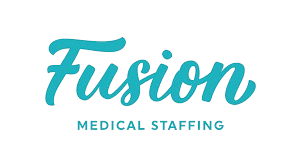Set Up the Testing Environment
We prepare the testing environment by configuring tools and technologies, including assistive technologies and specialized testing software.
Accessibility testing is the process of thoroughly reviewing an application or website to verify its usability for people with disabilities. The primary objective is to make sure that everyone, regardless of ability, can use the software. The software product is methodically tested at every level to guarantee compliance with all relevant regulations, such as the Americans with Disabilities Act (ADA) and the Web Content Accessibility Guidelines (WCAG), and pinpoint any potential accessibility impediments. These include issues like poor contrast, missing alternative text for photos, and unclear navigation.
Jignect is dedicated to ensuring that both web and mobile apps are inclusive and usable by everyone, including people with disabilities. We tailor our services to meet diverse industry requirements. Our team ensures websites deliver a seamless experience to all users, and also evaluates apps on iOS and Android platforms to make them more accessible. To support businesses in meeting legal requirements, we conduct thorough evaluations for ADA and WCAG compliance as part of our service suite. Our methods follow best practices and recognized guidelines, ensuring products are inclusive, accessible, and compliant worldwide.

We prepare the testing environment by configuring tools and technologies, including assistive technologies and specialized testing software.

Our team performs hands-on testing methods like keyboard navigation and screen reader testing to assess the usability of your products, services, and environments.

We leverage automated testing tools to scan for accessibility issues, such as missing alternative text or inadequate color contrast. Our web accessibility testing ensures that websites are evaluated against the latest standards to provide an inclusive experience for all users. In addition, our mobile accessibility testing focuses on identifying and fixing barriers within mobile applications across both iOS and Android platforms to enhance usability for people with disabilities.
We analyze the test results to identify accessibility problems and prioritize fixes for immediate resolution.

We apply necessary changes to your software to address the identified accessibility issues.

Our team re-tests the software to confirm that accessibility problems have been resolved and that new issues have not been introduced.
We document the testing process and outcomes comprehensively and communicate the findings to relevant stakeholders.
We prepare the testing environment by configuring tools and technologies, including assistive technologies and specialized testing software.
Our team performs hands-on testing methods like keyboard navigation and screen reader testing to assess the usability of your products, services, and environments.
We leverage automated testing tools to scan for accessibility issues, such as missing alternative text or inadequate color contrast. Our web accessibility testing ensures that websites are evaluated against the latest standards to provide an inclusive experience for all users. In addition, our mobile accessibility testing focuses on identifying and fixing barriers within mobile applications across both iOS and Android platforms to enhance usability for people with disabilities.
We analyze the test results to identify accessibility problems and prioritize fixes for immediate resolution.
We apply necessary changes to your software to address the identified accessibility issues.
Our team re-tests the software to confirm that accessibility problems have been resolved and that new issues have not been introduced.
We document the testing process and outcomes comprehensively and communicate the findings to relevant stakeholders.
By discerning potential barriers to accessibility in the application or website, accessibility testing services enable developers to implement changes that will enhance the user experience for those with impairments as a whole.
By conducting accessibility testing, we can support inclusivity and foster an equal environment for all by validating that the application or website is accessible and easy to use for people with impairments.
Accessibility testing contributes to minimizing the probability of user misconceptions or dissatisfaction while augmenting user satisfaction by rendering the application or website more accessible. This can lead to heightened consumer loyalty as well as positive feedback.
Accessibility testing helps expand the application or website’s potential market outreach by making it user-friendly and accessible to a larger demographic of people, regardless of their individual abilities.
Accessibility testing ascertains that an application or website conforms to accessibility laws and regulations, like the ADA and WCAG. ADA compliance testing plays a critical role in ensuring that the software meets the necessary legal standards, helping to avoid any legal problems.

















What is accessibility testing and why is it important for digital products?
Accessibility testing ensures that digital products like websites, mobile apps, and documents are usable by people with disabilities. It’s crucial for meeting global standards like WCAG, enhancing user experience, avoiding legal risks, and expanding your reach to a broader audience.
Which tools and technologies do you use for accessibility testing?
Who benefits from accessibility testing services?
What types of digital platforms do you test for accessibility?
When should accessibility testing be performed in the development lifecycle?
How do you test for screen reader and keyboard navigation compatibility?
Why is ADA and WCAG compliance crucial for businesses today?